- The Core Mission: Creating Beautiful and Functional Outdoor Spaces
- So, What Do Landscape Designers Do Day-to-Day?
- The Skillset of a Professional Landscape Designer
- Landscape Designer vs. Landscape Architect: Understanding the Distinction
- The Journey to Becoming a Professional Landscape Designer
- The Landscape Design Process: From Vision to Reality
- The Role of Landscape Designers in Public Spaces and the Natural Environment
- The Power of Professional Landscaping Services
- Your Austin Oasis Awaits
Ever wondered who is behind the breathtaking public parks in Austin, the serene backyard retreats that feel like a personal oasis, or the thoughtfully designed green spaces that enhance our city’s natural environment? The answer is often a talented landscape designer. But exactly what do landscape designers do? It’s a profession that goes far beyond simply “planting trees” and arranging flowers. It’s a dynamic blend of art, science, and a deep understanding of how people interact with the world around them.
For those in Austin, TX, where the southern landscape presents both unique challenges and incredible opportunities, the role of a professional landscape designer is indispensable in creating not just beautiful, but also resilient and functional outdoor spaces. This in-depth guide will explore the multifaceted world of landscape design, from the initial spark of an idea to the flourishing final creation.
The Core Mission: Creating Beautiful and Functional Outdoor Spaces
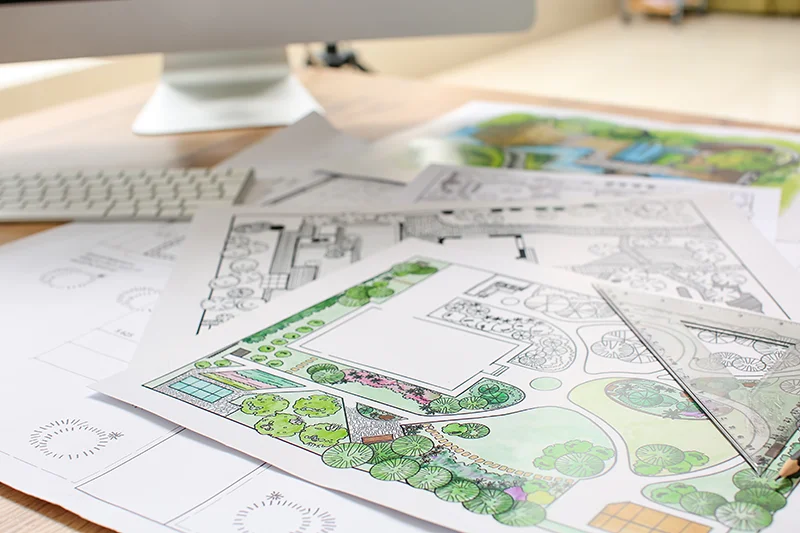
At its heart, a landscape designer’s job is to transform outdoor areas into environments that are both aesthetically pleasing and practical. This isn’t just about making a yard look pretty; it’s about a holistic approach to the design of outdoor spaces. A professional landscape designer considers a multitude of factors to achieve this balance.
The landscape design process is a journey of collaboration and creativity. It begins with a crucial first step: meeting clients. This initial consultation is where the designer seeks to understand the client’s vision, needs, and the practical requirements for the space. Do you envision a vibrant garden for entertaining, a peaceful retreat for relaxation, a safe and engaging play area for children, or a low-maintenance, eco-friendly haven?
From there, the designer begins a thorough site analysis. This involves studying the existing conditions of the property, including soil type, drainage patterns, sun exposure, and existing vegetation. In a climate like Austin’s, understanding these elements is critical to the long-term success of any design. This careful planning and designing phase ensures that the final landscape is not only beautiful on day one but will thrive for years to come.
So, What Do Landscape Designers Do Day-to-Day?
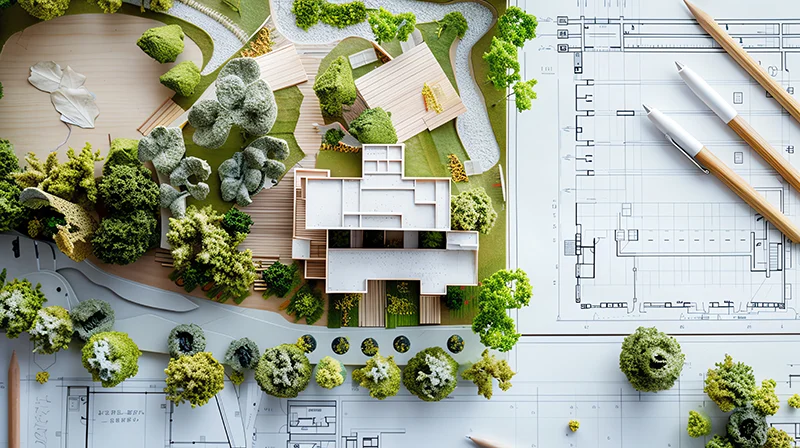
The daily life of a landscaper is as varied as the projects they undertake. It’s a profession that keeps them on their toes, blending creative time at the drawing board with hands-on problem-solving in the field. One morning might be spent deep in the details of a planting plan, while the afternoon could involve visiting a nursery or a project site to ensure the vision is coming to life correctly. A typical day might involve:
- Client Meetings: Discussing project goals, presenting design concepts, and providing progress updates.
- Site Analysis: Measuring and documenting existing site conditions.
- Design Development: Sketching initial concepts and creating detailed plans using specialized design software.
- Material Selection: Choosing the right plants, hardscape materials, and other elements to bring the design to life.
- Project Management: Collaborating with contractors, overseeing installation, and ensuring the project stays on schedule and within budget.
This dynamic role requires a unique blend of creativity, technical knowledge, and strong communication skills. The ability to seamlessly switch between being an artist, a botanist, and a manager is what allows a designer to navigate a project from a simple conversation to a breathtaking finished landscape. Ultimately, these daily activities are the building blocks that transform a client’s abstract ideas into a tangible, living piece of art, ensuring a cohesive and successful outcome.
The Skillset of a Professional Landscape Designer
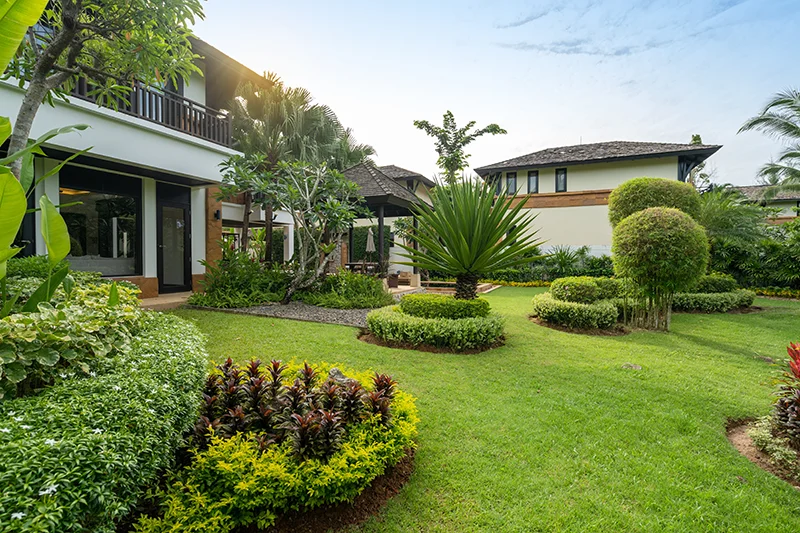
To excel in this field, a landscape designer must possess a diverse range of skills. These include:
- Horticultural Knowledge: A deep understanding of plants, including their growth habits, soil and light requirements, and suitability for the local climate. The art of planting trees, shrubs, and perennials is a cornerstone of their expertise.
- Design Principles: A strong grasp of design elements such as color, texture, form, and scale is essential to create beautiful and harmonious compositions.
- Technical Proficiency: Modern landscape designers are adept at using computer-aided design (CAD) software to create precise, detailed plans and 3D renderings that allow clients to visualize the final outcome before construction begins.
- Problem-Solving Abilities: From correcting drainage issues to working with challenging site constraints, landscape designers are skilled problem-solvers who can turn obstacles into design opportunities.
Landscape Designer vs. Landscape Architect: Understanding the Distinction
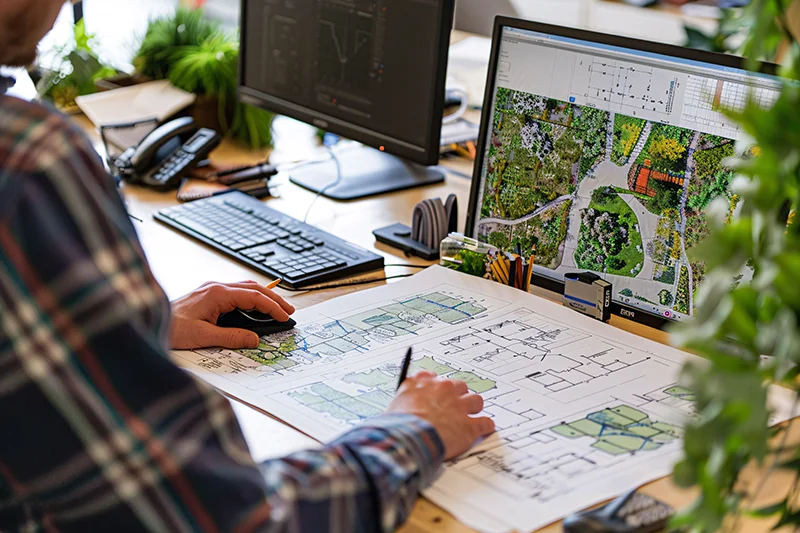
While the terms are often used interchangeably, there are key differences between a landscape designer and a landscape architect. The primary distinction lies in licensing and the scope of their work.
Landscape architects typically hold a bachelor’s degree or master’s degree in landscape architecture from an accredited university. To become licensed landscape architects, they must also complete a required period of internship and pass the rigorous Landscape Architect Registration Examination (L.A.R.E.). This license allows them to work on a broader range of projects, particularly large-scale public works such as a public park, urban plazas, and commercial developments. They are qualified to design and stamp plans for elements that impact public safety, such as retaining walls and complex drainage systems.
A professional landscape designer, on the other hand, may or may not have a formal degree, though many do. Their focus is often on residential and smaller-scale commercial projects. While they may not have the same legal authority as a licensed landscape architect, their expertise in creating stunning and practical outdoor living spaces is invaluable. Many highly skilled designers provide a wide array of landscaping services, transforming backyards into personal sanctuaries.
The Journey to Becoming a Professional Landscape Designer
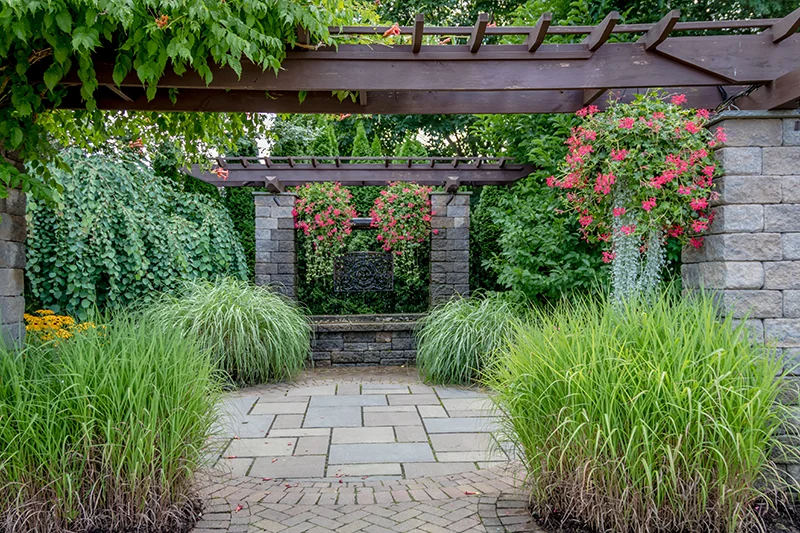
For those aspiring to enter this rewarding field, there are several pathways. A degree in landscape architecture or a related field like horticulture provides a strong foundation. These programs cover a wide range of subjects, including:
- Landscape design theory and history
- Plant and soil science
- Construction methods and materials
- Computer-aided design and other relevant software
However, a formal degree isn’t the only route. Many successful landscape designers have honed their skills through hands-on experience, apprenticeships, and certificate programs. A passion for the natural environment and a keen eye for design are essential ingredients for success.
The Landscape Design Process: From Vision to Reality
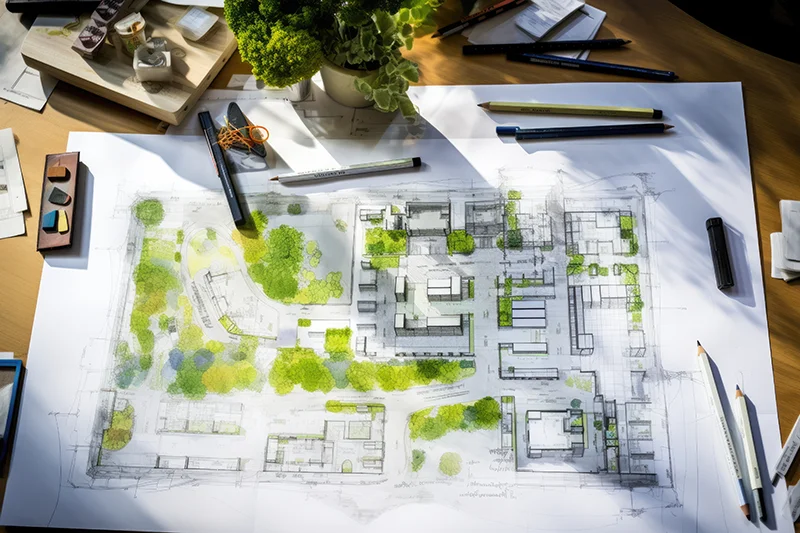
The journey of transforming an outdoor space is structured and collaborative. A great landscape doesn’t happen by accident; it’s the result of a thoughtful and well-executed plan. This structured approach ensures that every detail is considered and that the client is involved and informed at every turn. The landscape design process typically follows these key stages:
- Initial Consultation and Site Analysis: As mentioned earlier, this is where the designer gets to know the client and the property.
- Conceptual Design: Based on the initial consultation, the designer develops one or more conceptual plans. These are often presented as sketches or basic 3D models to convey the overall vision and layout.
- Design Development: Once a concept is approved, the designer refines the plan, selecting specific plants and materials and detailing the layout of hardscape elements such as patios, walkways, and water features.
- Construction Documentation: For more complex projects, the designer will create a detailed set of construction drawings and specifications. Contractors use these documents to build the landscape accurately.
- Project Implementation: The designer may oversee the installation of the landscape, working closely with contractors to ensure that the design intent is realized.
- Final Walk-through and Maintenance Guidance: Upon completion, the designer will walk through the finished project with the client and provide guidance on how to care for their new outdoor space.
This comprehensive process ensures that the final result not only meets but exceeds the client’s expectations, resulting in functional outdoor spaces that enhance their lifestyle. The final handover, complete with maintenance advice, empowers the homeowner to care for their new landscape so it matures beautifully over the years. This meticulous process is what truly protects the client’s investment and guarantees a space they will love for seasons to come.
The Role of Landscape Designers in Public Spaces and the Natural Environment
Landscapers’ influence extends well beyond private residences. They play a crucial role in shaping our public realm and protecting the natural environment. When it comes to designing a public park, landscape designers and architects are at the forefront, creating spaces that foster community, recreation, and a connection with nature.
In Austin, where green spaces are vital for both residents and the ecosystem, the expertise of these professionals is essential. They design parks and gardens that are not only beautiful but also sustainable, incorporating native plants that are adapted to the local climate and support wildlife. They also design innovative solutions for stormwater management, helping to mitigate flooding and improve water quality – a critical consideration in our region.
By thoughtfully integrating the built and natural environments, landscape designers contribute to the creation of healthier, more resilient, and more enjoyable communities for everyone.
The Power of Professional Landscaping Services
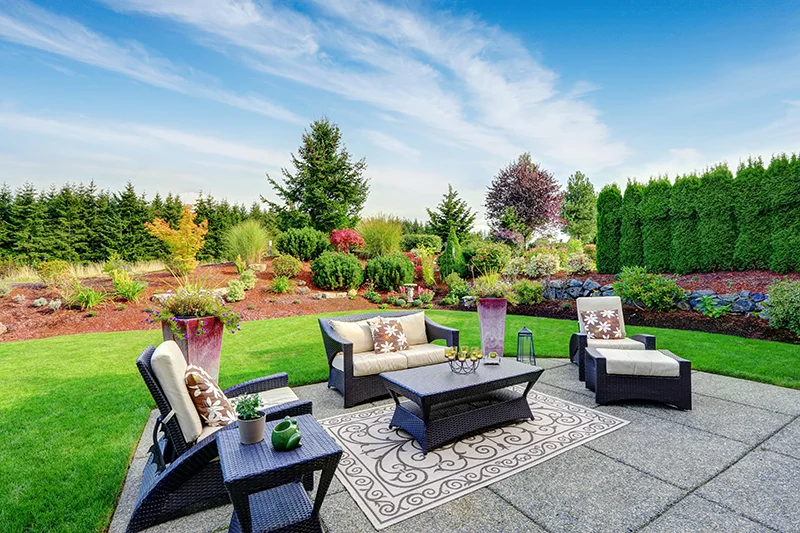
Hiring a professional landscape designer is an investment in your property and your quality of life. The expertise they bring to the table can save you time, money, and costly mistakes in the long run. A well-designed landscape can:
- Increase Property Value: A beautiful and functional outdoor space is a major selling point.
- Enhance Curb Appeal: A thoughtfully designed front yard creates a welcoming first impression.
- Improve Your Lifestyle: A well-planned backyard can become an extension of your home, providing a space for relaxation, entertainment, and connection with nature.
- Promote Environmental Sustainability: A knowledgeable designer can create a landscape that is both beautiful and eco-friendly.
From the initial planning and designing to the final flourish of a newly planted tree, landscape designers are the creative force behind the outdoor spaces we love. Their work enriches our lives, strengthens our communities, and promotes a deeper appreciation for the natural world. So, the next time you admire a stunning garden or enjoy a sunny afternoon in a beautiful park, you’ll have a deeper understanding of the vision, skill, and dedication that brought it to life.
Your Austin Oasis Awaits
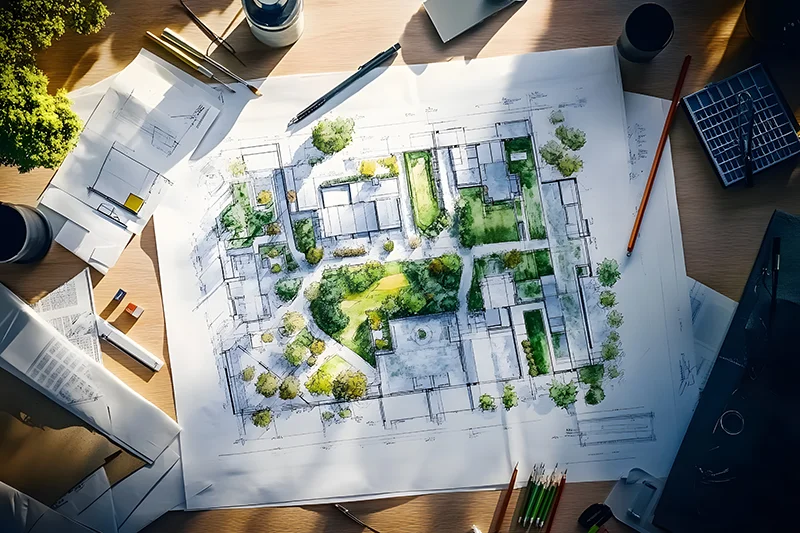
As you can see, a professional landscape designer is a creative partner, a technical expert, and a project manager all in one. They are dedicated artists and scientists who work to transform your property into a beautiful, functional, and enduring extension of your home. The right design can completely redefine how you experience your outdoor space, turning an ordinary yard into a personal sanctuary for relaxation, entertainment, and making memories.southern la
Here at Southern Landscape, we don’t just understand these principles—we live them. Our team of passionate designers specializes in crafting landscapes that are perfectly suited to the unique climate and character of Austin, TX. We have a deep appreciation for the southern landscape and the expertise to create stunning outdoor spaces that thrive in it. We handle every detail, from the initial vision and computer-aided design to the final, flourishing plant.
Ready to stop dreaming and start living in your perfect outdoor space?
Don’t wait another season to create the landscape you’ve always wanted. Contact Southern Landscape today to schedule your complimentary design consultation. Let’s work together to bring your vision to life!
